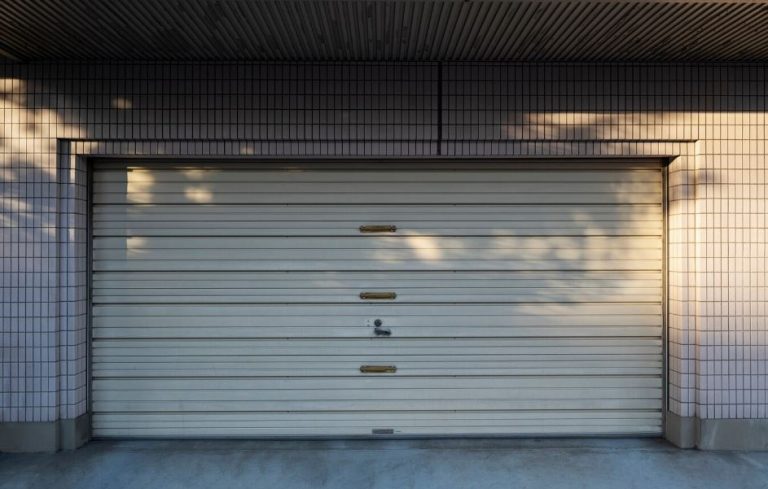Commercial garage doors are subjected to daily pressure from the clatter of closing mechanisms and the rumble of delivery trucks. These robust barriers maintain temperature control, control building access, and safeguard inventory—yet they remarkably resemble the unsung heroes of any company. They can easily turn into a liability if ignored.
Commercial garage door repair requests have significantly increased over the last five years, particularly in small manufacturing facilities and logistics hubs. Timely interventions could have prevented expensive replacements that frequently result from delayed maintenance. Businesses can save thousands of dollars a year in unplanned disruptions and prevent dangerous failures by giving even minor repairs top priority.
Commercial Garage Door Repair Essentials
| Key Aspect | Description |
|---|---|
| Common Problems | Springs snapping, rollers jamming, motors failing, doors coming off track |
| Safety Implications | Risk of employee injury, liability lawsuits, theft vulnerability if doors remain ajar |
| Ideal Repair Timing | Immediately after detecting unusual noise, jerky motion, or remote failure |
| Lifespan of Commercial Doors | 10 to 15 years with consistent lubrication and biannual professional servicing |
| Emergency Fixes Worth Knowing | Manual release cord use, realigning track rollers, cutting power to stuck openers |
| When Replacement Is Wiser | If the structure is corroded, mechanisms are obsolete, or safety features are missing |
| Routine Maintenance Suggestions | Monthly spring checks, cable inspections, opener tests, and sensor cleanings |
| Cost-Saving Maintenance Programs | Annual servicing contracts often reduce surprise repair bills and downtime significantly |
| Top Repair Providers (U.S. based) | A1 Garage Door, Vortex Doors, Overhead Door Co., Door Pros |
Pallet loading was delayed by three hours due to a jammed garage door, according to a Fort Worth facility manager. “We had trucks lined up around the block,” he said. Since then, we have planned inspections every two years. The money lost due to a stuck door is much greater than the cost of a visit.
Facility teams can spot fraying cables, loosening chains, and issues with sensor alignment by incorporating routine inspections into monthly schedules. If ignored, these minor problems eventually grow into serious risks. Hundreds of times a week, doors may open and close, especially in areas with heavy traffic. Torsion springs and automated systems are put under a great deal of strain by that amount of movement.
Installing reinforced steel doors with modernized openers has been especially advantageous for medium-sized businesses. Smart diagnostics that send alerts for wear indicators are frequently included in these more recent models. These doors are made to last even in industrial or coastal settings thanks to their exceptional durability, impact resistance, and weather seals.
Thermal contraction is a commonly disregarded problem during the winter months. Panel misalignment results from slight panel shrinkage. Many winter-related disruptions can be easily avoided by cleaning sensors and lubricating hinges and rollers once a month. Even when temperatures drastically drop, operations continue because of proactive attention.
When a door starts to move unevenly or rattle loudly, it’s usually a cry for help. Torsion springs should never be adjusted by business owners themselves. Tightly wound, these springs have the potential to violently snap back, seriously injuring people. Rather, spring replacements and repairs should always be done by a qualified technician.
Problems with garage doors may seem like a lesser priority to early-stage startups operating out of industrial co-working spaces. However, astute operators understand that appearance counts. A door that hangs unevenly or closes slowly conveys the wrong message to partners, clients, and even staff. Resolving such obvious flaws demonstrates attention to detail and a dedication to safety.
Many businesses today take advantage of same-day fixes and reduced emergency calls by utilizing repair service memberships. This strategy is especially creative for businesses that oversee several locations, where even one malfunctioning door could cause operational snags.
Garage doors have changed since more energy-efficient building codes were implemented. These days, they have improved insulation and are frequently rated for hurricane impact or fire safety. Modern replacements, which are notably better in terms of both structure and intelligent functionality, provide quicker open times and reduced noise levels, which are perfect for preserving harmony in mixed-use buildings.
The industry will be redefined in the upcoming years by automation and sensor integration. Building management systems combined with predictive maintenance alerts will enable facilities to take action before issues occur. Longer lifespans and much lower repair costs will be the outcomes of this change from reactive to proactive care.
Selecting a trustworthy supplier is still essential. Only certified commercial door specialists can guarantee long-term safety and adherence to OSHA and fire codes, even though smaller handymen might provide temporary solutions. The distinction between a temporary fix and a long-term solution is made by exceptionally transparent service agreements, upfront pricing, and part warranties.
Take a moment the next time your warehouse door creaks from Monday shipments. Your daily output is silently supported by a system of moving parts, including coils, gears, and sensors, hidden behind that metal curtain. Give it the expert care that it requires. After all, a commercial garage door creates opportunities in addition to allowing trucks to enter.


